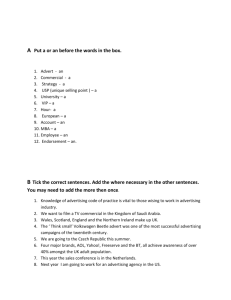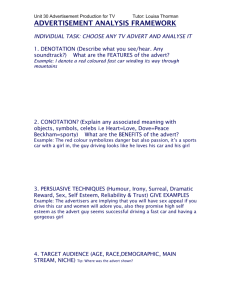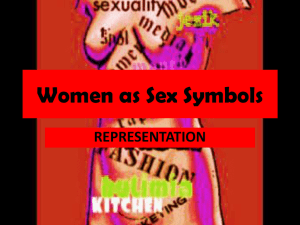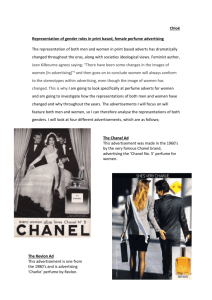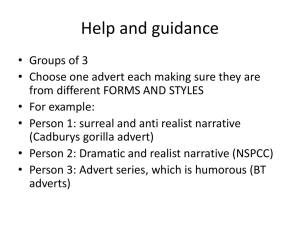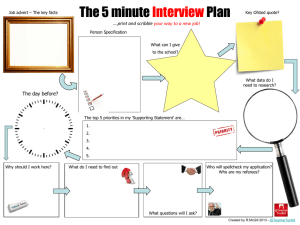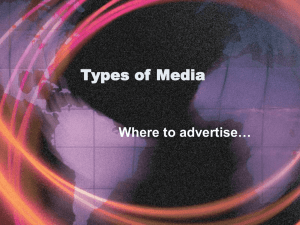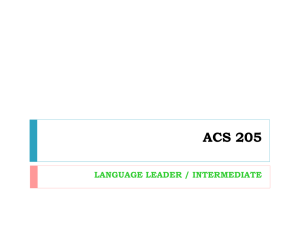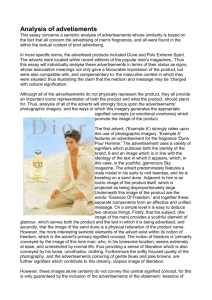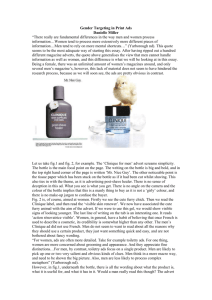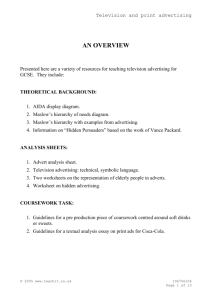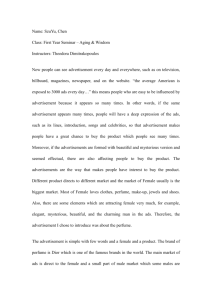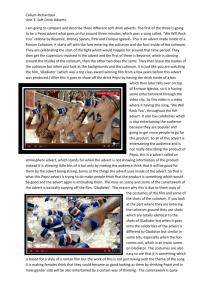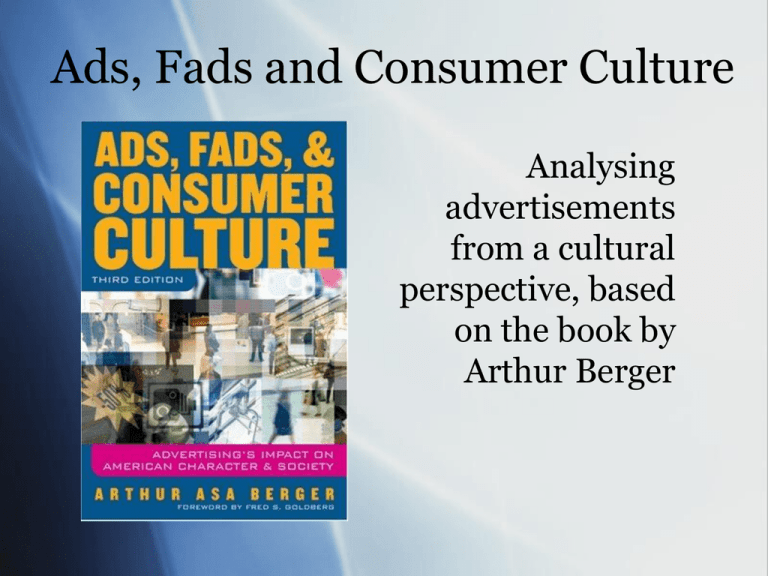
Ads, Fads and Consumer Culture
Analysing
advertisements
from a cultural
perspective, based
on the book by
Arthur Berger
Some facts and figures
Hours per year spent by average citizen watching TV: 1679 (p. 63)
Price of air-time for a 30-second commercial during 2006
Superbowl: $2.5 million (p. 2)
Total amount spent on advertising in the US (2005): $280 billion
(p. 113)
Total amount spent on advertising in the rest of the world: $241
billion (p. 114)
Americans who expressed interest in products to block adverts
(2004): 69% (p. 6)
Advertising as communication
Berger's model of “focal points in the study
of communication” (p. 52)
Art
Audience
Medium
Artist
Society
Analysing advertisements
Berger uses different approaches to analyse
advertisements, including:
• Semiotic analysis
• Psychoanalytic theory
• Sociological analysis
• Feminist analysis
• Historical analysis
• Myth/ritual analysis
Semiotic analysis
Semiotics is the study of signs – how things can be
used to deliver some kind of message.
The important point to remember when considering
how things functions as signs is that the meaning
attached to them is arbitrary. The meaning of signs is
a convention that is learnt within a group/society, it
is not a natural and universal meaning.
• What signs, symbols and codes can be
found in the advertisement?
Psychoanalytic theory
Freud suggested that our ego continually balances
the primitive subconscious desires for satiation of
our id against our superego, which provides critical
self-examination and anticipates the potential
damage of actions proposed by our id.
Advertisers frequently try to encourage our id in
order to get us to notice and desire their product
• How does the advertisement make use of
the human psyche to sell products?
Sociological analysis
Consider how elements of the text are relevant to
such matters as socio-economic class, gender, race,
sexuality, status and role.
• How does the advertisement reflect social
concerns, and the problems of people in their
daily lives?
Feminist analysis
As a specialist application of sociological analysis,
feminist analysis is particularly concerned with
power structures in society, especially those that keep
women in an inferior position.
• How does the advert reflect the values of
male-dominated society?
Historical analysis
Here the advert can be evaluated in terms of the
changes that have taken place in advertising over the
years, how the advert fits into a larger campaign
and/or previous advertising campaigns.
• How does the advertisement relate to
historical events?
Myth/ritual analysis
Advertisements often contain allusion to
contemporary popular culture. In addition, there is a
vast wealth of shared cultural knowledge relating to
mythical knowledge, such as biblical stories or
classical mythology.
• How does the advertisement relate to
ancient myths?
An example: Fidji perfume advertisment
How might we use
Berger's six different
approaches to analyse
and understand this
advertisement?
Semiotic analysis
• empty space
• position of mouth in photo
• posture of mouth/lips
• Polynesian woman?
• long, dark hair
• orchid
• Fiji: the tropics (escape)
• language: French
Psychoanalytic theory
• the snake: phallic symbol
• the snake: anxiety
• the word 'sex' contained in the advert (subliminal)
• removal to the tropics, away from the civilising
influence of home
N.B. This advert appeared in some countries
without the snake. Why?
Sociological analysis
• value and importance of romantic heterosexual love
• target audience: young women seeking escape?
• prestige product: expensive perfume, French
language and associations with high culture
• role of women: providers of sexual pleasure,
temptress
• ethnic assumptions: women from less developed
nations seen as less repressed, more passionate (more
primitive)
Feminist analysis
• snake: phallic symbol? = subjugation, dominance
• women's role as objects of male pleasure
• objectification of women in adverts: accessible to the male
gaze, on show to gratify male desires
• holding the “desirable” bottle of perfume, but perfume's
purpose is to please men: women perpetuate male
dominance?
• return to paradise = return to male dominance? (Garden of
Eden: “And [your husband] shall rule over you”)
Historical analysis
• Cleopatra killed by a snakebite
• Advertising: historical context
Myth/ritual analysis
• Medusa
• Garden of Eden
• Women as dangerous, snakelike, venomous
• Temptation
Interactive oral assignment: instructions
You (the whole class) have been chosen as the committee that will
nominate and choose the best print advertisement of all time.
Criterion: The advert that communicates the most meaning
1. Work in pairs (preparation: HMWK)
Each pair will nominate one advert. You need
to select that advert, and prepare a short
presentation of the meaning contained within
that advert.
2. The meeting (the IOA: next lesson)
Each pair presents their advert, after which
the whole group discusses the adverts and
decides on the winner.
Interactive oral assignment: further information
Remember to consult the marking criteria for information
on how you will be assessed in this task.
1. Preparation
Your mark for the A criterion will largely be determined by the
preparation you do. How well have you understood the
advertisement? How well are you able to analyse its content
and meaning?
2. The task
During the task, you will be running the meeting yourselves.
Your ability to contribute to the ongoing discussion, and
interact with the others is part of how you will be assessed
on criterion C. How clearly you present your ideas,
particularly the analysis of your advert, will be assessed on
criterion B.
References
Berger, Arthur Asa (2007) Ads, Fads and Consumer Culture: advertising's impact on American
character and society. Lanham: Rowman and Littlefield

